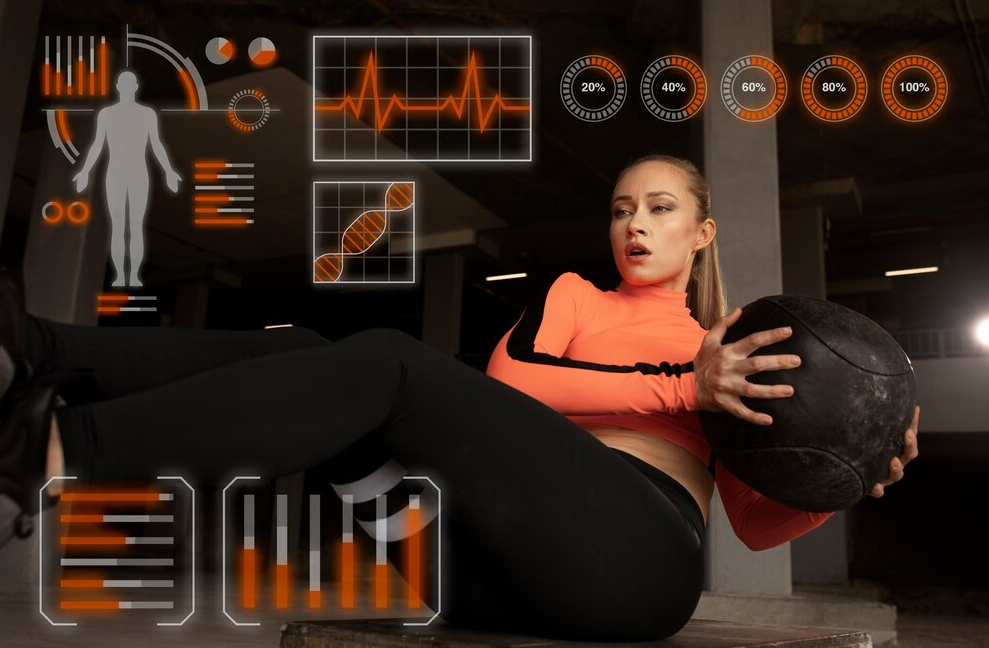AI-Driven Virtual Reality: The Future of Sports Training and Fan Immersion

In the past, virtual reality, also known as VR, was simply an experimental tech demo. Nowadays, it has transformed into something far more significant. Athletes train using VR, while fans can watch their favorite teams in a new dimension. AI is currently improving VR in ways that can only be described as groundbreaking.
AI-powered virtual reality is constructing surreal experiences that were never attainable. From a cricketer practicing for an upcoming match in an augmented environment, to a fan enjoying a 360-degree pornographic drone show view of their favorite players—it is all now possible.
Training Smarter, Not Just Harder
Human endurance is being taken to new heights, and with the use of VR technology powered by AI, athletes can train in real-time simulations that adapt dynamically to their actions. These systems incorporate performance data and machine learning to relive high-precision match situations. For example, a batsman can practice against certain bowlers’ specific deliveries, and the speed, angle, and spin of the ball can be adjusted to match real-life scenarios. Goalkeepers can also practice saving penalties from AI simulations of top league goal scorers.
These situations are more than mere visual perceptions; they are immersive and interactive worlds that respond to the athlete’s actions. The outcome? Improved skill retention, decision-making, and learning speed. For those following how tech is shaping performance and outcomes, a top online betting website offers a look at where data, odds, and form predictions come together—often influenced by how players are training behind the scenes.
Fan Immersion Like Never Before
While players get better with VR, fans are getting closer to the action. AI-enhanced VR is bringing spectators from the couch to the stadium—virtually, of course. From 360° replays to interactive match-viewing from different angles, the fan experience is evolving fast.
Imagine watching a cricket match from the bowler’s POV. Or standing virtually at the slip while the game unfolds in real time. With AI integrating motion tracking and predictive models, fans can even view replays that highlight plays before they happen, or suggest the most exciting angles based on crowd reactions and game data.
It’s no longer about watching sports. It’s about experiencing them.
To stay connected with how athletes and creators are pushing boundaries, follow MelBet Instagram for behind-the-scenes content, VR experiments, and next-gen sports content drops.
Why AI Is the Real MVP Behind the Scenes
Virtual reality alone is impressive—but when you pair it with AI, the possibilities explode. AI powers the realism, accuracy, and adaptability that makes VR a true training and entertainment tool.
It analyzes motion, player tendencies, spatial awareness, and timing, creating tailored simulations for each user. For fans, it learns your favorite players and teams, and adjusts the immersive content to match your preferences.
AI also makes VR accessible. Instead of building unique simulations for every scenario, generative AI can create new ones on the fly, based on past performance data or even current match context.
Here’s What AI-Driven VR Is Already Offering:
- Realistic player simulations based on actual movement and decision patterns
- Match scenario recreations for training and tactical reviews
- 360° fan experiences that adjust dynamically with in-game moments
- Real-time stat overlays within VR environments
- Predictive replays showing what’s likely to happen next
The Challenges Still Ahead
Of course, no tech revolution comes without a few speed bumps. AI-driven VR still requires significant hardware and investment, meaning access is often limited to elite teams and organizations.
There’s also the issue of motion sickness for some users, and simulations should ensure that they reflect reality closely enough to be truly useful. Plus, for fans, creating seamless, lag-free, high-resolution VR experiences on consumer devices remains a hurdle.
However, with both AI and VR technology improving rapidly, these challenges are being tackled one by one.

Looking Ahead
The future of sports won’t just be physical—it’ll be digital, immersive, and smart. Athletes will train in data-fed simulations that react in real time. Fans will step into the stadium without leaving their homes. And AI will be the invisible engine making it all possible.
From youth academies to global tournaments, the blend of artificial intelligence and virtual reality is set to become a cornerstone of performance and engagement.
Final Thoughts
AI integrated with VR technology goes beyond the domain of mere entertainment—it is fundamentally changing the way in which sports are played, taught, and experienced. From assisting athletes practice under realistic pressure to giving fans an opportunity to be a part of the game like never before, the combination of technology with sports will undeniably take everything to the next level.
The most exciting part in all of this is that there is further untapped potential waiting!